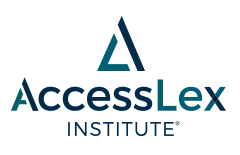
Law School Admissions
Title
Professors Cure, Academic Support Cares: The Potential Role of Academic Support in Increasing Graduation Rates at Law Schools at Historically Black College and Universities
Document Type
Law Review Article
Publication Date
1-2021
Keywords
student attrition, race and ethnicity
Abstract
"This article examines the vital role of academic support in law schools at Historically Black Colleges and Universities, where minorities and the underprivileged are the vast majority. The article consists of three parts. Part 1 defines Historically Black Colleges and Universities (known as "HBCUs" and briefly examines their history and evolution...
Part 2 of this article examines how some public undergraduate institutions were able to close the graduation gap between minority and non-minority students. The reason behind this in-depth examination is to assist us with drawing from the experience of these successful programs that can be implemented at HBCUs to better help minority students. The achievement gap represents 'the disparity in academic achievement between minority and disadvantaged students and their white counterparts.' The focus of this article is on public, nonprofit institutions because two-thirds of minority students who attend a four-year college attend a public institution. Examining ASP at these successful institutions provides useful lessons that could help law schools at HBCUs better serve their students. It is important to note that, in discussing ways to close the graduation gap between minority students and non-minority students in undergraduate institutions, this article does not look at the admissions criteria. There is also no consideration on whether non-minority students are doing better or worse than minority students. The focus is on how academic support programs are helping minority students succeed in undergraduate institutions and thus reducing the graduation gap. In other words, this article is only looking at colleges that narrowed gaps by making gains in graduation rates among minority students, while either keeping graduation rates for non-minority students steady or by improving rates among these students as well.
Finally, Part 3 of this paper discusses how ASP can help faculty and students at HBCUs law schools drawing from the experience of successful programs that other public undergraduate institutions have implemented in order to close the graduation gap."




